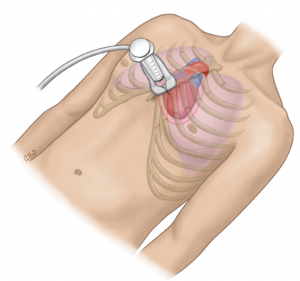Both subxiphoid and parasternal approaches have been used for emergent pericardiocentesis in patients presenting with pericardial effusion and tamponade, but which approach minimizes procedural complications?
In a 2012 review by Clinical Anatomy, when using ultrasound guidance, a parasternal approach was found to be generally more effective and safer than a subxiphoid approach.

A subxiphoid approach has a greater risk of damage to the liver, phrenic nerve, diaphragm, and stomach.
A parasternal approach has a potentially higher risk of pneumothorax.
When US is not available, “blind” pericardiocentesis via the subxiphoid approach is still preferred.
Loukas, M., Walters, A., Boon, J.M., Welch, T.P., Meiring, J.H. and Abrahams, P.H. (2012), Pericardiocentesis: A clinical anatomy review. Clin. Anat., 25: 872–881. doi: 10.1002/ca.22032
Heffner, AC. Emergency pericardiocentesis. In: UpToDate, Grayzel, J (Ed), UpToDate, Waltham, MA. (Accessed on January 18, 2016.)
